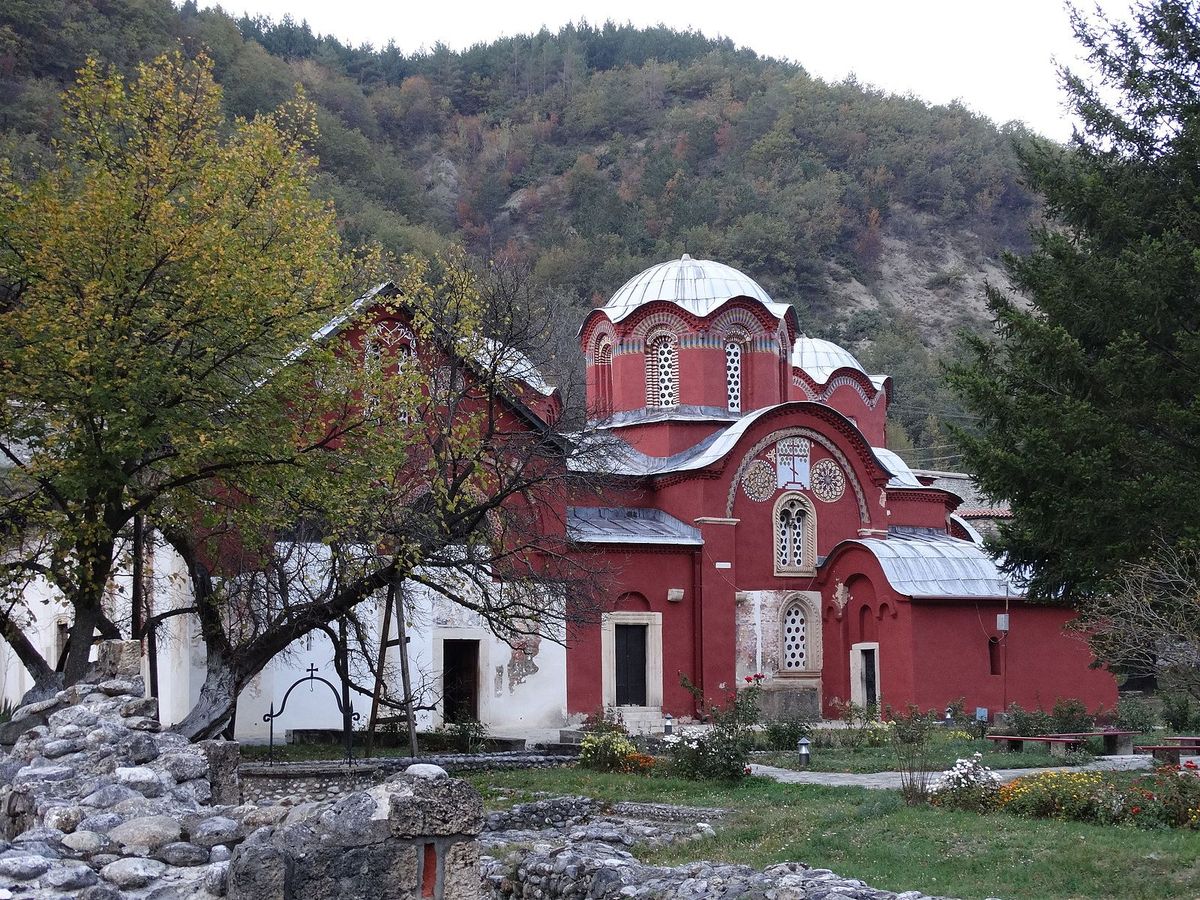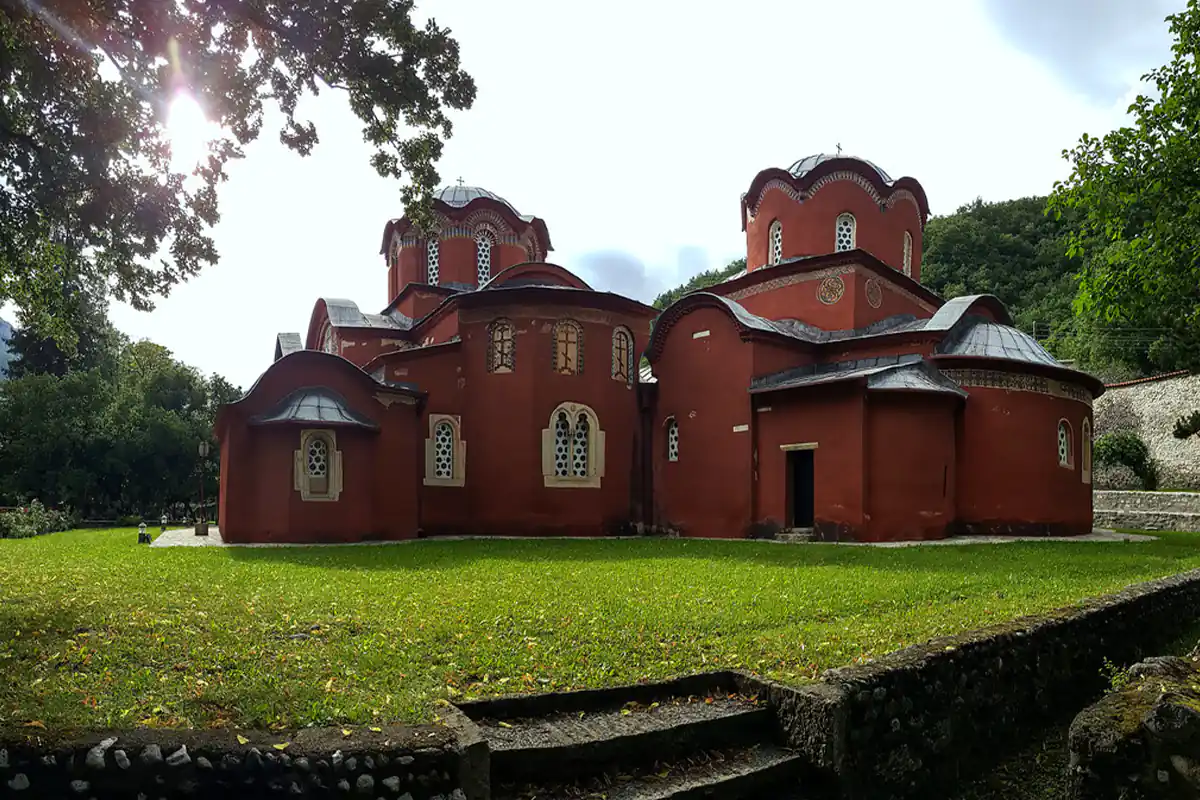
Key Takeaways
- Peje Monastery is a UNESCO World Heritage site rich in Byzantine and Serbian architectural styles (source).
- This historic monastery was founded in the 13th century and has played a central role in the religious and cultural history of Kosovo.
- Its distinctive cross-in-square plan, Byzantine influences, and vibrant frescoes showcase centuries of religious artistry.
- Peje Monastery remains a living religious center, hosting worship services, festivals, and pilgrimages today.
- Visiting the monastery offers a profound glimpse into Kosovo’s layered history, architecture, and spiritual life.
Table of contents
- Historical Background of Peje Monastery: Influences and Events Shaping Its Legacy
- Architectural Features of Peje Monastery: A Testament to Byzantine and Serbian Styles
- Religious and Cultural Significance: Peje Monastery’s Role in Community and Ceremonial Life
- Visiting Peje Monastery: Practical Travel Information and Insights
- Peje Monastery in the Context of Kosovo Heritage: Symbolizing Historical and Cultural Richness
- Conclusion: Embracing Peje Monastery’s Historical Richness and Artistic Value
Historical Background of Peje Monastery: Influences and Events Shaping Its Legacy
Peje Monastery was established in the 13th century by Archbishop Arsenije I, serving as a vital spiritual hub for the Serbian Orthodox Church. Over centuries, it experienced numerous historical phases that shaped its enduring legacy.
Key Historical Events and Periods
1. 13th-14th Centuries (Nemanjić Dynasty): Under the rule of the Nemanjić dynasty and King Stefan Dušan, Peje Monastery saw significant development, becoming a central religious and cultural center. It was expanded with additional churches and ornate frescoes, reflecting the height of Serbian medieval culture.
2. Ottoman Period: Despite invasions and challenges brought by the Ottoman Empire, the monastery demonstrated resilience. It navigated complex agreements, taxation, and occasional turmoil, maintaining its religious role.
3. Modern Era (20th-21st centuries): The monastery endured conflicts during the world wars and the late 20th-century conflicts in Kosovo, standing as a symbol of cultural and religious continuity amidst regional upheavals. Its importance remains significant for the Serbian Orthodox community today.
Its historical significance also includes its intertwined relationship with Albanian history and culture, reflecting the region’s diverse heritage. The monastery’s presence underscores the rich, complex narrative of Kosovo’s past. Learn more about its UNESCO status.
Architectural Features of Peje Monastery: A Testament to Byzantine and Serbian Styles
Peje Monastery exemplifies Byzantine-Serbian architectural artistry, with beautiful design elements that blend aesthetic beauty with spiritual symbolism. As a UNESCO World Heritage site, it showcases centuries of religious construction and artistic expression.
Architectural Styles and Design Elements
- Cross-in-Square Plan: A classic Orthodox church layout, featuring a central dome supported by four columns, encouraging spiritual engagement.
- Byzantine Influences: Domes, arches, and intricate brickwork reveal strong Byzantine artistic traits, emphasizing continuity in Orthodox tradition.
- Serbian Adaptations: Use of local stone, regional decorative motifs, and exonarthexes distinguish its regional character.
- Fortified Walls: The surrounding defensive walls reflect its historical need for protection and resilience through the ages.
Notable Artworks, Frescoes, and Artifacts
The monastery houses frescoes dating from the 13th century, depicting Christian saints and biblical scenes. Over time, artworks from the 14th, 16th, and 17th centuries added to its artistic treasury, offering rich iconography and theological narratives.
Restoration and Preservation
Because of its cultural importance and regional conflicts, multiple restoration projects have been undertaken. International bodies like UNESCO support ongoing efforts to preserve its frescoes and structural integrity, ensuring its stories survive for future generations. .
Religious and Cultural Significance: Peje Monastery’s Role in Community and Ceremonial Life
As a living religious sanctuary, Peje Monastery continues to serve worshippers, pilgrims, and the local community. Its spiritual significance stretches from medieval times through today.
Importance in Religious Life
Historically the headquarters of the Serbian Orthodox Church in Kosovo, it remains a vital place for worship, prayer, and pilgrimage. Religious festivities such as Easter and Christmas are observed with elaborate services, attracting believers from across the region.
Community and PilgrIMAGE
The monastery hosts community activities, religious celebrations, and pilgrimages, helping preserve local traditions and foster spiritual bonds. Visitors often come seeking serenity and spiritual enrichment amidst its ancient walls.
Religious Festivals and Traditions
Major religious holidays like Easter and feast days of saints are celebrated with processions and communal prayers. These events reinforce its role as a cornerstone of Orthodox life in Kosovo.
Visiting Peje Monastery: Practical Travel Information and Insights
Planning a visit to Peje Monastery requires some logistical preparation to enjoy this historical site fully.
Location and Accessibility
Situated near the city of Pejë/Peć in western Kosovo, the monastery is accessible via the M9 highway from Pristina. Public buses, taxis, and rental cars are available, with private transportation offering greater flexibility.
Opening Hours, Fees, and Tours
Check ahead with the monastery or local guides for current hours. Entry is generally free, but donations support maintenance. Guided tours are available, often led by monks or local guides, providing in-depth historical and artistic insights.
Visitor Tips
- Wear modest attire (covered shoulders and knees) to respect religious customs.
- Maintain silence inside to preserve the serene atmosphere.
- Inquire about photography restrictions inside the churches.
- Consider visiting during religious festivals for a richer experience.
Peje Monastery in the Context of Kosovo Heritage: Symbolizing Historical and Cultural Richness
Peje Monastery stands as a core element of Kosovo’s cultural landscape, alongside other historic sites like the Decan Monastery. Its UNESCO designation emphasizes its global importance.
Heritage and Tourism
The monastery boosts local tourism and awareness of Kosovo’s spiritual and architectural heritage. It exemplifies the region’s multicultural past, attracting visitors interested in history, art, and faith.
Protection and Preservation
UNESCO’s involvement ensures international support for its conservation. Local authorities also prioritize safeguarding this monument, recognizing its role in regional identity.
Conclusion: Embracing Peje Monastery’s Historical Richness and Artistic Value
Peje Monastery is more than just a monument; it is a living testament to centuries of faith, artistry, and resilience. Its architectural magnificence, historical significance, and ongoing religious role make it an essential portal into Kosovo’s rich cultural tapestry.
Exploring this site offers a profound experience, connecting us with centuries of spiritual devotion and artistic excellence. Whether you are a history enthusiast, a spiritual seeker, or an admirer of Byzantine and Serbian art, Peje Monastery invites you to marvel at its timeless beauty.
For those passionate about history and culture, a visit to Peje Monastery is an inspiring journey through Kosovo’s storied past and vibrant present. Share its story, appreciate its artistry, and help preserve its legacy for generations to come.


0 Comment